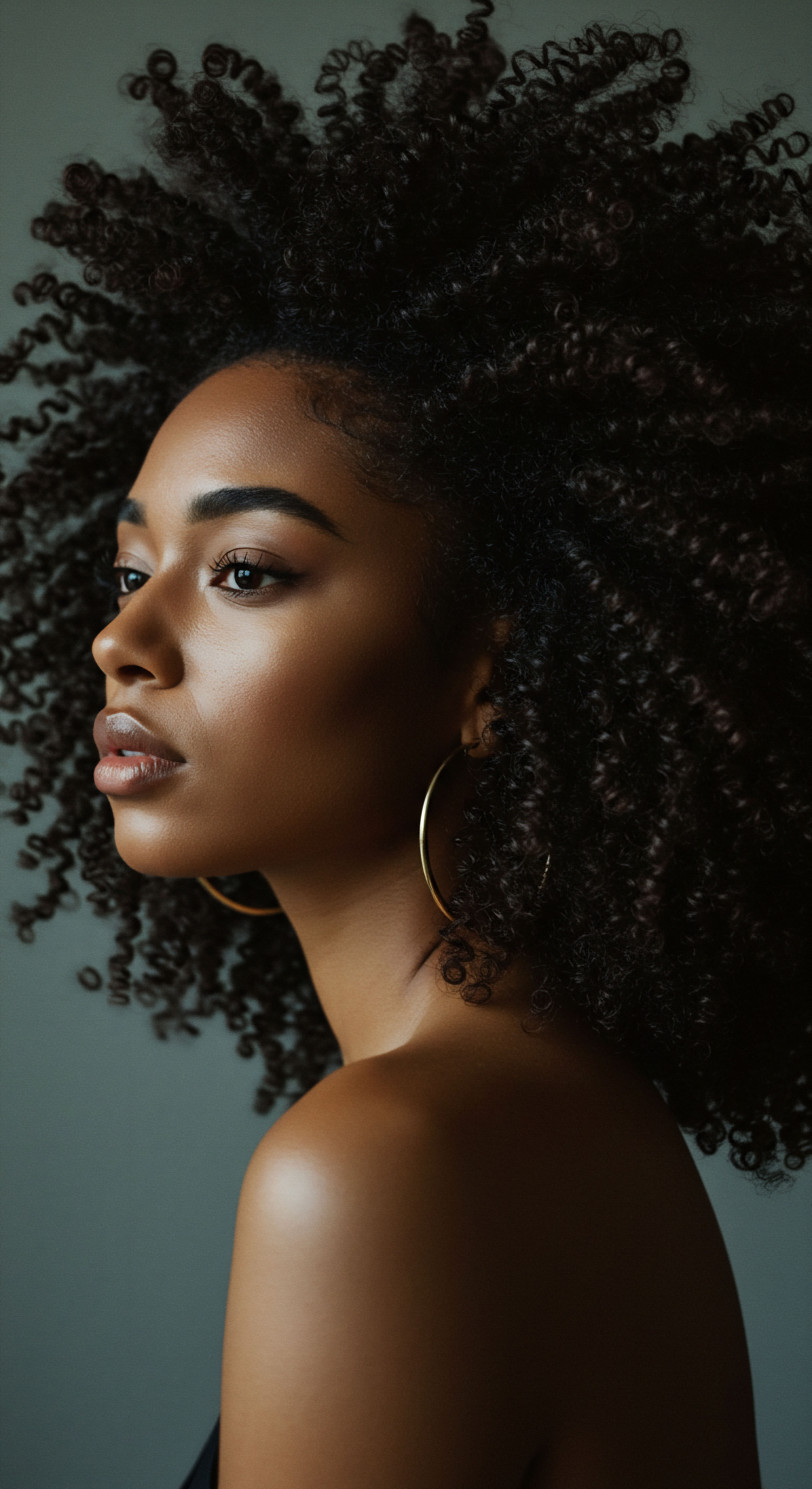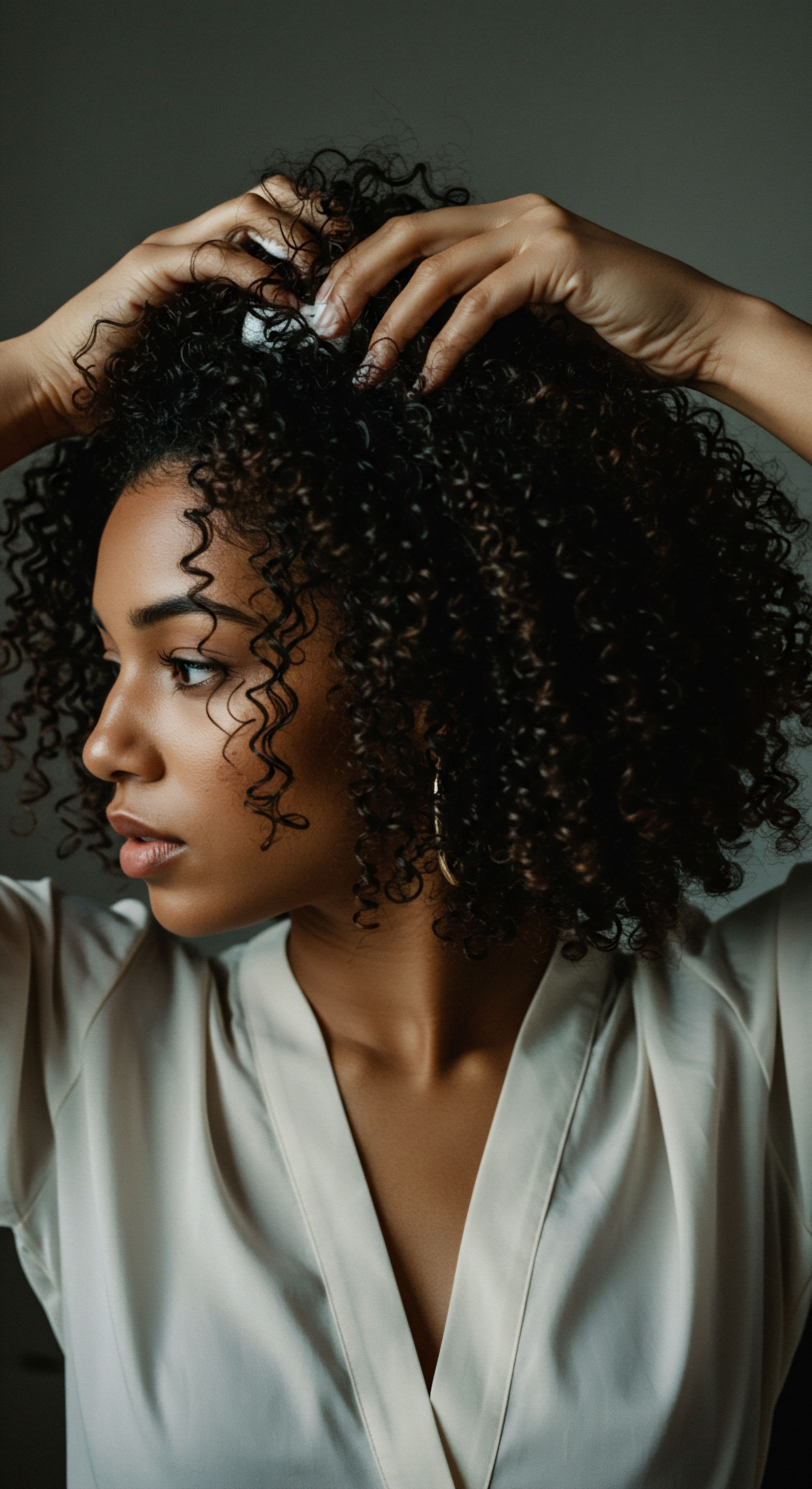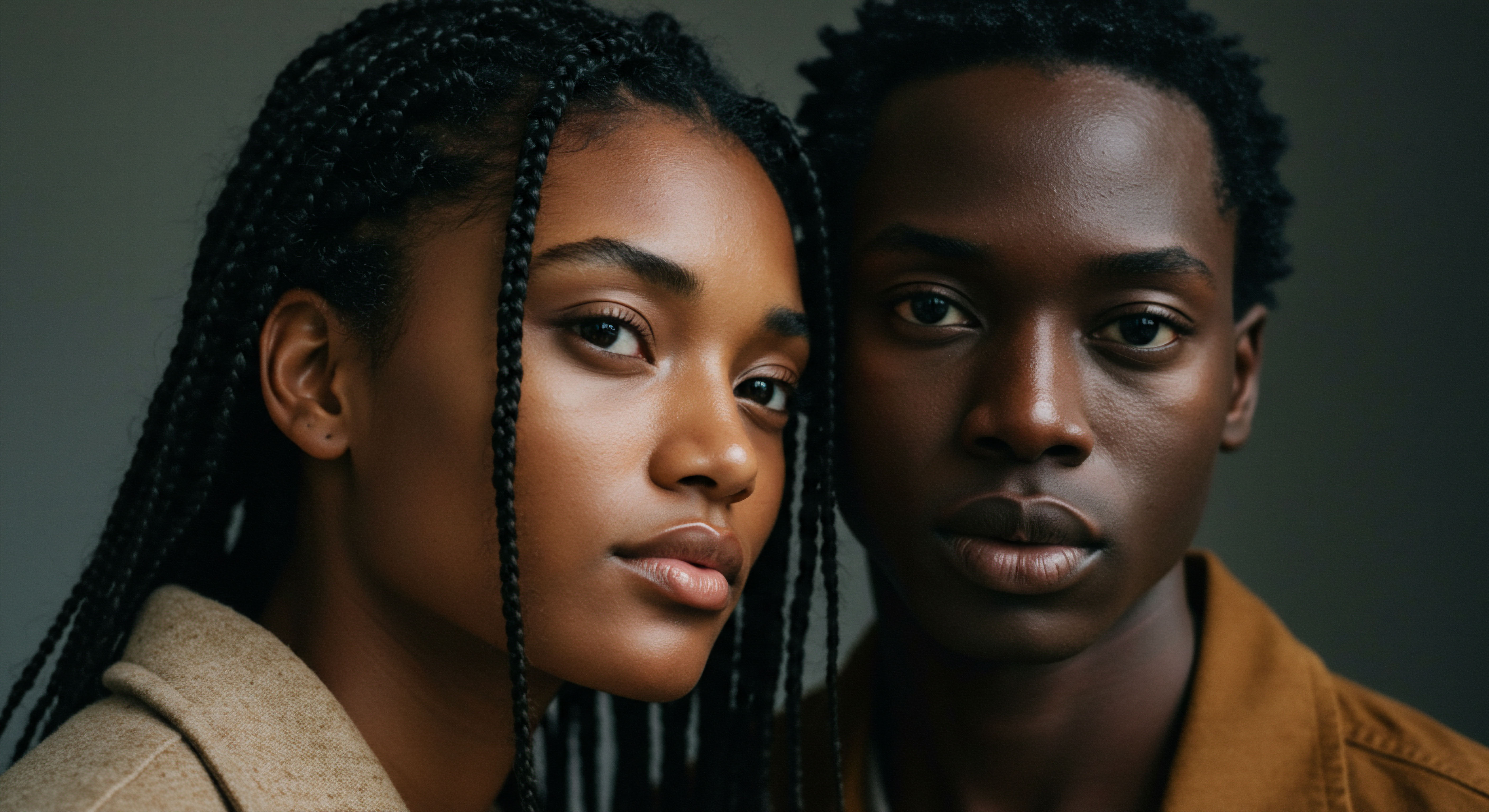
Roots
The quiet rustle of leaves, a whisper from antiquity, often holds secrets far more profound than our modern perceptions allow. When we speak of henna, our minds might first drift to the vibrant designs adorning hands for celebration, yet its story begins much deeper, within the very earth and across millennia, stretching back to a time when humanity first sought connection with the natural world for sustenance, healing, and adornment. Henna, derived from the Lawsonia inermis plant, a slender tree that thrives in the sun-drenched landscapes of North Africa, the Middle East, and South Asia, has roots that intertwine with the earliest expressions of human culture. Its journey from a simple desert shrub to a globally recognized element of beauty and ritual is a testament to its enduring power and adaptability.
Consider the ancient civilizations, those who first understood the plant’s peculiar gift. Archaeological discoveries tell us that the use of henna stretches back at least 5,000 years, with some evidence pointing to its presence in Babylonian times. One of the most compelling early records comes from ancient Egypt, where henna was not merely a cosmetic choice but a component of practices aimed at preserving life’s essence beyond the earthly realm. Mummies have been unearthed with hair and nails stained a striking reddish hue, a testament to henna’s application during the embalming process, perhaps to restore a youthful appearance or as a symbol of protection and spiritual vitality.
Henna, from the Lawsonia inermis plant, holds an ancient lineage, its history deeply intertwined with early human practices of preservation and adornment across sun-drenched regions.

The Plant’s Ancient Allure
The core of henna’s transformative ability lies in a molecule called Lawsone, or 2-hydroxy-1,4-naphthoquinone. This reddish-orange dye, concentrated in the plant’s leaves and stems, bonds with the keratin protein present in hair, skin, and nails, creating a lasting stain. The discovery of this property, likely accidental, perhaps by shepherds observing their grazing animals with stained mouths, opened a world of possibilities for ancient communities. Beyond its staining capacity, the plant offered other advantages.
Its cooling properties provided relief in scorching desert climates, leading to its use on skin and hair to alleviate heat. Medicinal applications also appear in early records; the Ebers Papyrus, an ancient Egyptian medical text, mentions henna’s use in treatments for conditions like ringworm.
The widespread geographical distribution of the Lawsonia inermis plant, from the Horn of Africa to the Indian subcontinent, meant that different cultures independently encountered and adopted its use. This parallel discovery and integration into diverse societies speak to the plant’s innate utility and the universal human desire for self-expression and well-being. The variations in its application, from simple coloring to intricate designs, began to define regional distinctions, laying the groundwork for the rich traditions we observe today.

Botanical Beginnings and Early Applications
The earliest documented uses of henna often extend beyond mere aesthetic purposes. For ancient Egyptians, its role in funerary rites highlights a belief in its protective or regenerative qualities. The discovery of henna traces on hair samples from mummies, including those of pharaohs like Ramses II, suggests a practice of maintaining a vibrant appearance even in the afterlife. This connection to longevity and spiritual well-being underscores a foundational aspect of henna’s significance ❉ it was seen as more than a dye; it was a conduit for connection, for health, and for blessing.
- Lawsone ❉ The active dye molecule in henna, responsible for its characteristic reddish-orange color.
- Ancient Egypt ❉ A primary site of early henna use, particularly in mummification and cosmetic hair coloring.
- Cooling Properties ❉ Beyond dyeing, henna was valued for its ability to provide relief from intense heat in arid climates.

Ritual
As the sun dips below the horizon, casting long shadows across courtyards and homes, a different kind of light often emerges – the warm glow of community, the quiet hum of anticipation, and the rich scent of henna. The application of henna, particularly to hair, transcends simple beauty routines; it transforms into a deeply rooted ritual, a practice passed down through generations, laden with meaning and collective memory. This section steps beyond henna’s elemental origins to explore its practical applications and ceremonial significance across a spectrum of hair traditions.
Across North Africa, the Middle East, and South Asia, henna became an integral part of life’s milestones. It marked births, celebrated circumcisions, solemnized weddings, and honored religious festivals. The very act of preparing the paste, often involving grinding dried leaves and mixing them with liquids like lemon juice or tea to enhance the color, was communal, a time for women to gather, share stories, and impart wisdom. This collective experience deepened the connection to the practice, making it a living heritage rather than a static tradition.
Henna’s use evolved into deeply meaningful rituals, marking life’s passages and solidifying communal bonds across diverse cultures.

Hair as a Canvas for Cultural Expression
For diverse hair traditions, henna offered a natural and effective way to alter hair color, condition strands, and even symbolize social status or life transitions. Unlike synthetic dyes that penetrate the hair shaft, henna coats the keratin, creating a protective layer that can add shine and strength. This interaction with the hair’s protein structure meant that henna not only colored but also provided a conditioning effect, a dual benefit valued in times when chemical treatments were unknown. The resulting shades, ranging from vibrant reds to rich auburns and burgundies, depended on the original hair color, the quality of the henna, and any added ingredients.
In India, the term Mehndi refers specifically to the intricate body art created with henna, often for brides, symbolizing love, joy, and prosperity. While mehndi is primarily associated with skin decoration, the plant’s application to hair also held profound cultural weight. For centuries, it served as a preferred method for coloring hair, particularly for those seeking a natural alternative to grey coverage or a desired reddish tint. The practice extended to men as well, with bearded elders in regions like Bengal often coloring their facial hair with henna.

Ceremonial Hair Adornment
The application of henna to hair in various cultures was often steeped in specific customs and beliefs. In some traditions, the act of coloring hair with henna was a preparatory step for significant events, a purification or blessing. For brides, henna on the hair could signify beauty, fertility, and a new beginning. The longevity of the color, fading gradually over weeks, mirrored the enduring nature of the blessings sought during these ceremonies.
Consider the Jewish communities of Morocco, where elders traditionally smudge henna on the palms of the bride and groom during wedding ceremonies. This act, while primarily for the hands, speaks to the overarching symbolism of henna ❉ to bestow good health, fertility, wisdom, and security upon the couple. This symbolic weight extended to hair, where a change in color could signify a new phase of life, a coming of age, or a dedication.
- Wedding Rites ❉ Henna on hair often marks bridal preparations, symbolizing blessings and new beginnings.
- Community Gatherings ❉ The preparation and application process frequently serve as communal events, strengthening social ties.
- Protective Qualities ❉ Beyond color, henna is valued for its conditioning properties, coating hair strands and adding strength.
The precise methods of henna application for hair varied. Some traditions involved simple paste application, while others incorporated additional ingredients like indigo for darker shades or cassia obovata for lighter tones, expanding the palette of natural hair colors achievable. This adaptability allowed communities to tailor henna use to their aesthetic preferences and the specific needs of their hair textures. The meticulous process, often requiring hours for preparation and application, was itself a form of devotion, a slow art that demanded patience and respect for the natural world.
| Region Ancient Egypt |
| Common Hair Use Hair dyeing for mummies, cosmetic enhancement |
| Associated Cultural Significance Protection, spiritual vitality, youthful appearance in afterlife |
| Region India (Mehndi) |
| Common Hair Use Hair coloring, conditioning |
| Associated Cultural Significance Beauty, joy, prosperity, good fortune for brides |
| Region Arabian Peninsula |
| Common Hair Use Hair dyeing for special occasions |
| Associated Cultural Significance Blessings, marking life events, cooling properties |
| Region North Africa (e.g. Mali, Somalia) |
| Common Hair Use Hair coloring, cultural identity |
| Associated Cultural Significance Wisdom (older women), celebration, self-expression, protection |

Relay
To truly comprehend henna’s enduring presence, we must look beyond its ancient beginnings and ceremonial applications, turning our attention to the intricate interplay of science, evolving cultural contexts, and the contemporary discussions that shape its relevance today. How does a plant-derived dye, so deeply rooted in antiquity, continue to adapt, provoke conversation, and hold its ground in a world dominated by synthetic alternatives? This section journeys into the deeper scientific understandings of henna’s action, its socio-cultural evolution, and the complex dialogues surrounding its modern-day usage, particularly concerning textured hair.
At its scientific heart, henna’s effectiveness lies in the lawsone molecule’s ability to bind with keratin. This chemical reaction, a Michael addition, creates a permanent stain on hair that lasts until the hair strand sheds. The lawsone content in henna leaves, typically ranging from 1% to 2%, directly influences the intensity of the color.
The plant’s growing conditions—dry, hot temperatures and iron-rich soil—yield higher lawsone concentrations, a detail recognized by ancient Egyptians who noted variations in staining power based on environmental factors. This understanding of botanical chemistry, albeit empirical, guided early practitioners in achieving desired results.
Henna’s enduring appeal rests on the lawsone molecule’s unique interaction with keratin, a scientific reality recognized by ancient practitioners who observed its varying potency.

Modern Challenges and Resurgences
While natural henna (pure Lawsonia inermis) is generally considered safe for hair and skin, its resurgence in modern beauty markets has not been without complications. The demand for darker, faster-staining results led to the adulteration of henna products with synthetic additives, most notably Para-Phenylenediamine (PPD). PPD, a potent allergen, can cause severe reactions, including allergic contact dermatitis, blistering, and scarring, especially when applied to the skin in “black henna” temporary tattoos.
This issue highlights a crucial distinction ❉ the historical use of pure henna differs significantly from modern, chemically enhanced versions. The scientific literature documents the adverse effects of PPD, with studies indicating that sensitization from black henna tattoos can lead to cross-reactions with other PPD-containing products, including conventional hair dyes. For instance, a review of studies on contact dermatitis to hair dye and henna noted that itching was the commonest symptom in 16% of patients, with erythematous scaly plaques seen in 10% and vesicular reactions in 6% of cases, all attributed to such reactions. This data underscores the importance of sourcing pure henna and understanding its composition, particularly for individuals with textured hair who may seek natural alternatives to harsh chemical treatments.

Cultural Continuity and Contemporary Reinterpretations
The historical journey of henna for hair is not linear; it is a complex interplay of cultural preservation, adaptation, and occasional friction. For communities with textured hair, henna has often served as a cherished part of ancestral beauty practices, a link to heritage and identity. In many African cultures, henna holds deep meaning beyond mere aesthetics, signifying community, culture, and history. Its use for protective styling, for strengthening strands, and for imparting color has been passed down through generations.
However, the global popularity of henna has also sparked discussions around Cultural Appropriation. When elements of a minority culture are adopted by members of a dominant culture without understanding or respect for their original context, the meaning can become lost or distorted. The marketing of age-old practices, like henna hair dyeing, as “new” or “surprising” by Western companies can erase the contributions of communities of color who have preserved these traditions for centuries. This raises important questions about who benefits from the commercialization of cultural practices and whether recognition is given to their origins.
Yet, many within the global henna artist community, including women of color from various regions, hold a view that henna, at its heart, is an art medium, welcoming its use by anyone who appreciates it. This perspective suggests a desire for shared appreciation, provided that the historical and cultural significance is acknowledged and respected. The ongoing conversation serves as a reminder that while traditions can evolve, their roots remain vital.
For textured hair, henna offers unique benefits. Its ability to coat the hair shaft can contribute to increased strand thickness and strength, a valuable attribute for hair types prone to breakage. While pure henna provides reddish tones, it can be combined with other plant powders like indigo for brown or black shades, or cassia for lighter, more golden hues, offering a spectrum of natural color options without the harshness of synthetic dyes. This versatility, coupled with its conditioning properties, positions henna as a powerful tool for maintaining hair health and achieving desired aesthetics, all while honoring a tradition that has transcended time and geography.
The continuous scientific investigation into lawsone’s properties, beyond just dyeing, also highlights its potential as an antibacterial and antimicrobial agent. This reinforces the historical understanding of henna’s medicinal uses, demonstrating that ancient wisdom often aligns with modern scientific findings. The longevity of henna’s use, despite its sometimes messy application or limited color palette compared to synthetic options, speaks to its inherent value and the trust placed in its natural properties by diverse communities worldwide.
| Property Lawsone Binding |
| Description The 2-hydroxy-1,4-naphthoquinone molecule (lawsone) chemically reacts with keratin protein in hair. |
| Property Stain Permanence |
| Description The bond formed is strong, resulting in a lasting stain until the hair strand naturally sheds. |
| Property Color Variation |
| Description Shade depends on original hair color, lawsone concentration, and additional plant materials. |
| Property Conditioning Effect |
| Description Henna coats the hair shaft, contributing to perceived strength and shine. |
| Property The interaction between lawsone and hair keratin underpins henna's enduring efficacy as a natural hair colorant. |

Reflection
The enduring legacy of henna, from ancient burial rites to contemporary beauty practices, reminds us that the care of our hair is rarely a superficial act. It carries echoes of history, whispers of communal gatherings, and the deep resonance of personal identity. Henna, in its unassuming form, offers a profound connection to generations past, to traditions that celebrated natural elements, and to the inherent beauty of textured hair in all its forms.
Its story is a vibrant thread, illustrating how plants from our earth can hold not only pigments but also purpose, well-being, and a timeless link across diverse human experiences. The quiet wisdom of a plant, offering color and care, continues to guide us toward a more grounded understanding of beauty.

References
- Begum, T. (n.d.). The henna plant ❉ Transcending time, religion and culture. Natural History Museum.
- The Zay Initiative. (n.d.). Cultural Ink ❉ Henna’s Colourful Legacy.
- Wikipedia. (n.d.). Henna.
- Reshma Beauty. (2024). The History and Cultural Significance of Henna in Hair Coloring.
- Henna by Sienna. (n.d.). Henna in the Ancient World.
- Holloway, A. (2014). 3,300-year-old Egyptian woman with hair extensions discovered in Armana. Ancient Origins.
- Sienna. (2017). From My Files 3 ❉ The Oldest Record of Henna. Eshkol HaKofer.
- Times of India. (2025). Reasons why henna hair dyeing isn’t recommended for natural hair.
- Hair Everyday. (2025). 6 Disadvantages Of Using Henna On Hair ❉ An Expert Tells You The Pros A.
- PharmaTutor. (2022). Henna in Cosmetics.
- Morocco World News. (2021). Henna ❉ History, Uses, Benefits, Symbolic Importance.
- Healthline. (2021). Is Henna Hair Dye a Bad Idea? Here’s What the Experts Have to Say.
- St Thomas University. (n.d.). Henna ❉ Its History and Cultural Significance.
- Times of India. (2025). Can Henna or Mehendi increase hair growth?
- Karger Publishers. (2019). Henna as a Hair Dye ❉ A Current Fashion Trend with Ancient Roots.
- ResearchGate. (n.d.). A study on contact dermatitis to hair dye and henna.
- Beauty Tips. (2024). The History of Henna ❉ Exploring Cultural Origins and Historical Significance.
- Miraj, S. & Kiani, S. (2020). A Review study of chemical constituents and Side-effects of black henna for Children. Scholar Research Library.
- Ramli, N. K. C. M. et al. (2016). Use of Henna (Lawsonia inermis) in the Islamic Perspectives. KONAKA2016.
- Ferwer. (2024). Henna for hair and not only for them.
- ResearchGate. (n.d.). ISOLATION AND BIOLOGICAL PROPERTIES OF LAWSONE ❉ A REVIEW.
- MDPI. (2016). Sensitization and Clinically Relevant Allergy to Hair Dyes and Clothes from Black Henna Tattoos ❉ Do People Know the Risk? An Uncommon Serious Case and a Review of the Literature.
- Healthy Options. (2018). Henna Hair Dye ❉ Pros and Cons.
- WebMD. (2024). Henna ❉ What You Need to Know.
- Frontiers. (2023). Mechanisms of impairment in hair and scalp induced by hair dyeing and perming and potential interventions.
- WebMD. (n.d.). Henna.
- BLAM UK CIC. (2025). Henna Is How We Wear Our Roots.
- EC Europa. (n.d.). OPINION ON Lawsonia inermis (Henna).
- Wikipedia. (n.d.). Lawsone.
- ResearchGate. (n.d.). Henna through the centuries ❉ A quick HPTLC analysis proposal to check henna identity.
- ResearchGate. (n.d.). A study on the dyeing characteristics and electrochemical behaviour of lawsone–indigo mixtures.
- UNESCO Intangible Cultural Heritage. (n.d.). Henna ❉ rituals, aesthetic and social practices.
- Organic Beauty Recipes. (2017). Blonde Henna Hair Recipe To Cover Grays.
- Blog. (n.d.). Henna and Cultural Appropriation.
- WYV Archive. (2020). The Commodification of Henna Hair Dye by White-Owned Companies.
- MDPI. (2021). An Experimental and Theoretical Study of Dye Properties of Thiophenyl Derivatives of 2-Hydroxy-1,4-naphthoquinone (Lawsone).
- Soundaryah. (2021). Ancient Recipe of Henna Mask for Hair Growth.